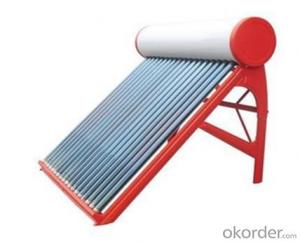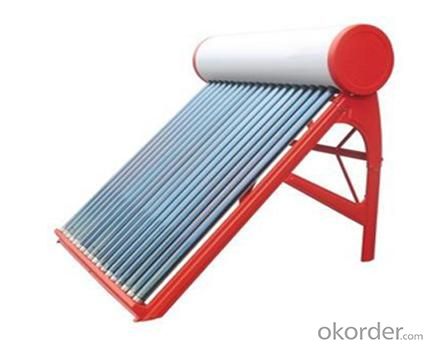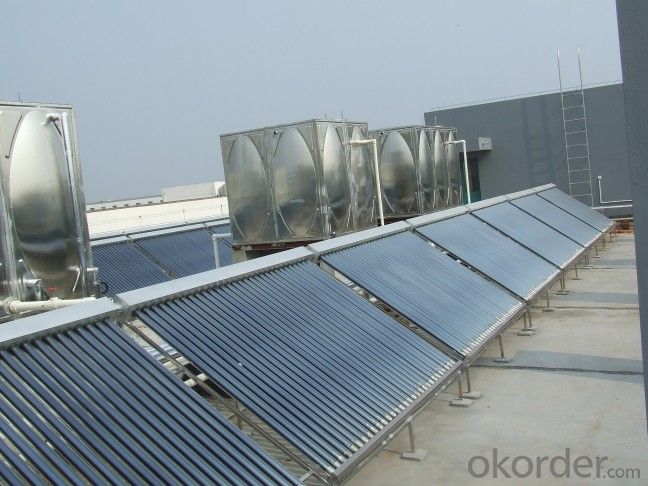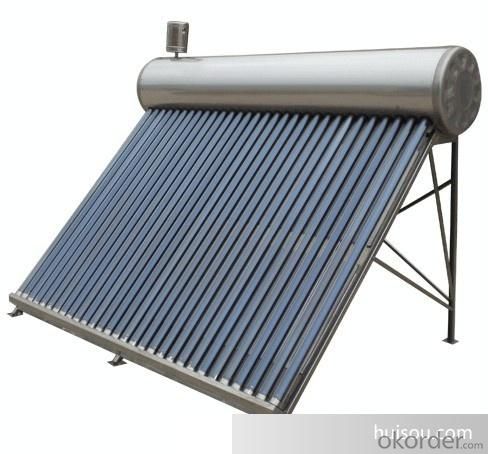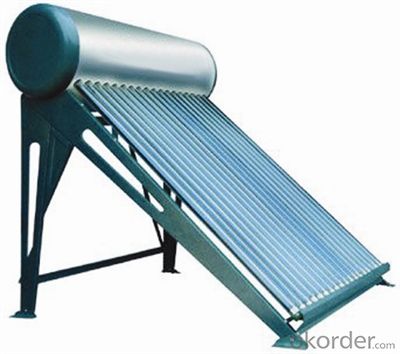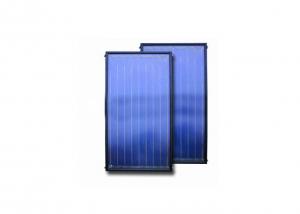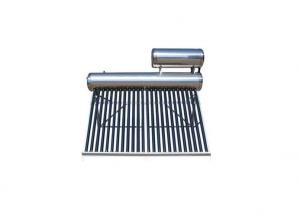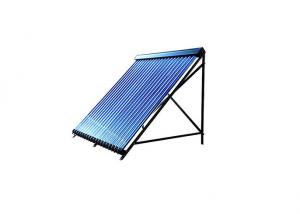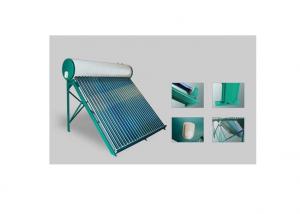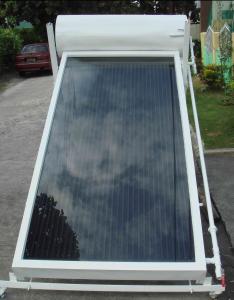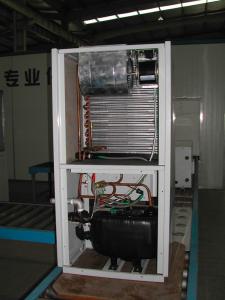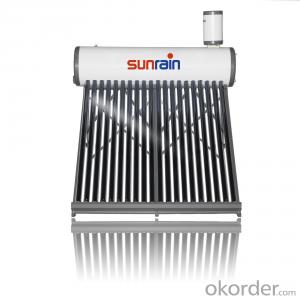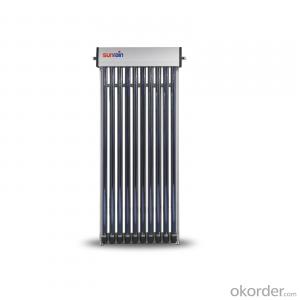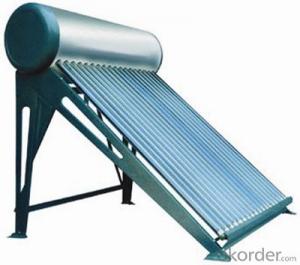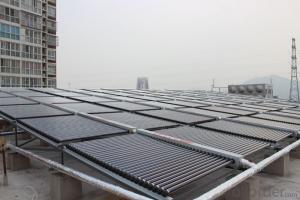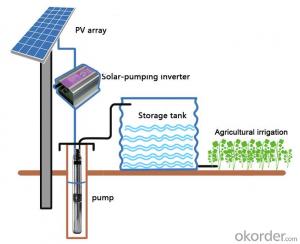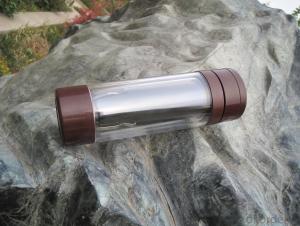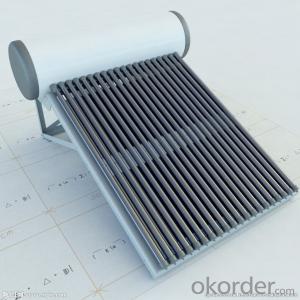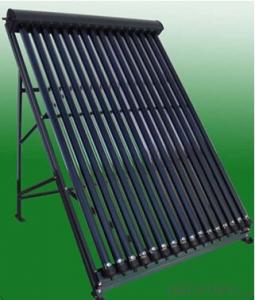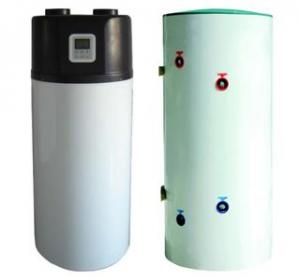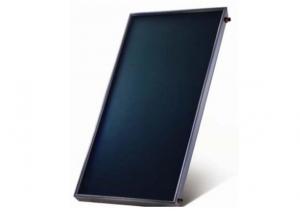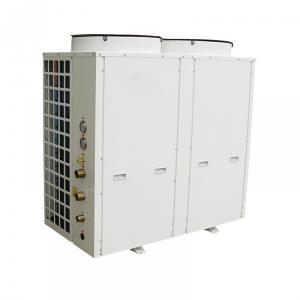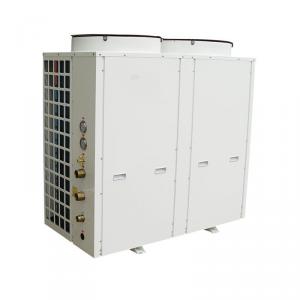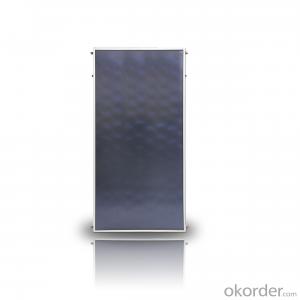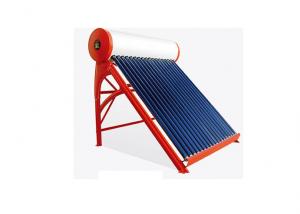Solar Water Heater With Electric Backup and Auto Water Supply Tank
- Loading Port:
- China main port
- Payment Terms:
- TT OR LC
- Min Order Qty:
- 10 set
- Supply Capability:
- 5000 set/month
OKorder Service Pledge
OKorder Financial Service
You Might Also Like
Working Principle of Domestic Solar Water Heaters:
Solar energy, in essence, is an electromagnetic wave, a type of strong optical radiation, which is produced by thermonuclear fusion reaction. The energy of the solar radiation is transmitted through the liught of different wave length. The solar water heater is designed to mainly take in the energy of visible light & near ultra red light through the selective absorbing coating of vacuum tubes.When the water in the solar collector is heated by the solar radiation, its temperature rises. As a result, the water in the solar collector and the water in the tank form natural convection because of density contrast casued by the temperature difference. So the water of the higher temperature is incessantly forced into the insulated solar water tank( As shown in the figure).
Features
<1> Imported SUS304-2B food-level stainless steel,thickness:0.31~0.5mm
<2> Outer tank: High quality stainless steel,thickness:0.31~0.5mm
<3>Insulation: 50~55mm polyurethane foam
<4> Vacuum tube: CU/SS-AL/N red tube
<5> Frame: Stainless steel/Aluminum alloy,thickness:1.2~2mm
<6> Reflector: Stainless steel/Aluminum alloy as option
<7> Available accessories: Feeding tank,solar controller,electric heater, Mag rod,thermostatic mixing valve
Specification
ITEM.NO | SPECIFICATION | EFFECTIVE LIGHT AREA | TANK'S CAPACITY | APPLICATION PEOPLE | CBM | |||
DIAMETER OF WATER TANK | QTY OF TUBE(pcs) | DIAMETER OF TUBE | LENGTH OF TUBE | |||||
Z-NS5810 | 460mm | 10 | 58mm | 1.8m | 1.04 | 100L | 4 | 0.37 |
Z-NS5812 | 460mm | 12 | 58mm | 1.8m | 1.25 | 120L | 4-5 | 0.44 |
Z-NS5815 | 460mm | 15 | 58mm | 1.8m | 1.56 | 150L | 6 | 0.56 |
Z-NS5818 | 460mm | 18 | 58mm | 1.8m | 1.87 | 180L | 7-8 | 0.64 |
Z-NS5820 | 460mm | 20 | 58mm | 1.8m | 2.08 | 200L | 8 | 0.7 |
Z-NS5825 | 460mm | 25 | 58mm | 1.8m | 2.61 | 250L | 10 | 0.89 |
Z-NS5830 | 460mm | 30 | 58mm | 1.8m | 3.13 | 300L | 12 | 1 |
Z-NS5836 | 460mm | 36 | 58mm | 1.8m | 3.75 | 360L | 14-15 | 1.3 |
Z-NS5840 | 460mm | 40 | 58mm | 1.8m | 4.17 | 400L | 16 | 1.4 |
Z-NS5845 | 460mm | 45 | 58mm | 1.8m | 4.69 | 450L | 18 | 1.6 |
Product Details Show:
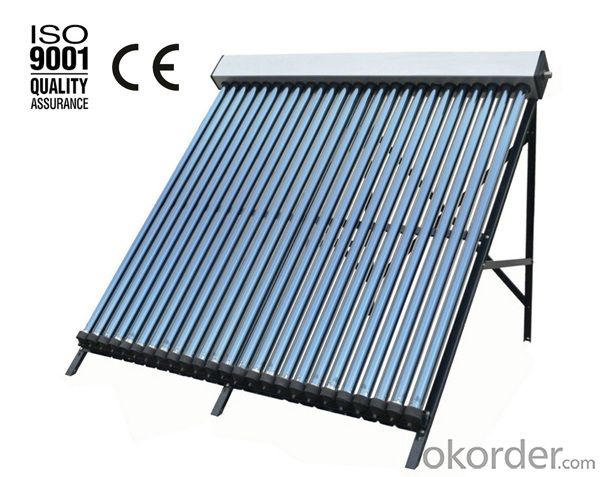
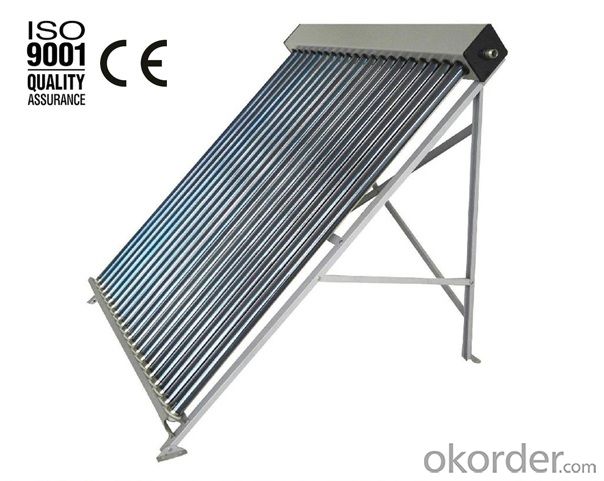
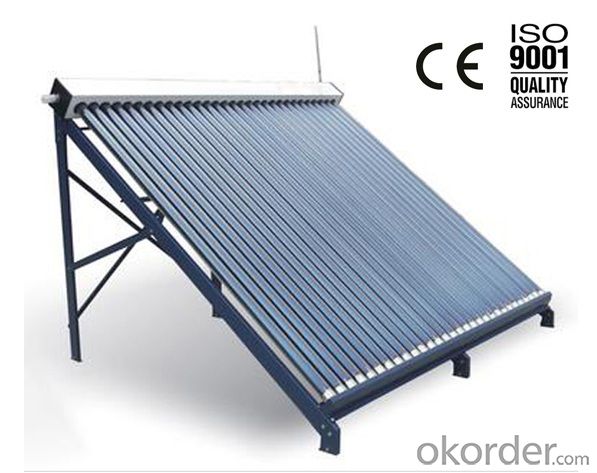
FAQ
1. Q: Are you a factory or trading company?
A: We are a factory. Especially for Solar Controller, PWM solar controller 50A12V/24V
2. Q: Where is your factory located? How can I visit there?
A: Our factory is located in Guangzhou, China. You are warmly welcomed to visit us!
3. Q: what other product you have except such Solar Lighting?
A: We have poly ,mono cells and panels. Off grid solar system, like off grid solar inverter, pure sine wave inverter, solar collector, solar controller, solar charger, Portal solar system, battery, DC Fan, Solar Led Light.
4. Q: Can the price be cheaper?
A: Of course, you will be offered a good discount for big amount.
5. How can I get a sample?
A: Please call us or send email for asking the samples.
- Q: Can a solar water heater be used in areas with high levels of dust?
- Yes, a solar water heater can still be used in areas with high levels of dust. However, it is important to regularly clean the solar panels to ensure maximum efficiency. Dust accumulation on the panels can reduce their ability to absorb sunlight and generate heat.
- Q: What is the heating principle of solar water heater?
- The utility model is characterized in that the vacuum heat collecting tube absorbs sunlight to convert the water in the heat energy heating pipe into the water. The water tank can be kept warm and can be used for hot water for several hours. Due to the overall thermal insulation, coupled with auxiliary heating, such water heaters four seasons. The solar water heater because of long-time exposed material, on the tank and the bracket presents severe test, corrosion resistance, heat resistance, cold resistance to rust, so it is some material of stainless steel, some Aluminum Alloy. Due to the difference between the South and the north of the sun, to absorb more sunlight for the design principles, the design of the stent and the ground is not the same.
- Q: What is the quality standard for solar water heaters, to the vast number of consumers a clear standard for reference
- You can look at several aspects:1 vacuum tube, which is the core of solar energy, the vacuum tube is not good, the solar energy can not reach a certain temperature, the use of summer does not matter, but in winter there is no way to use.Some ultra low-cost solar water heater using the vacuum tube has the following defects: low vacuum, only high-quality products 1/100; a large number of impurities and residual water vapor pipe, a high temperatures encountered into gas, vacuum reduction; low vacuum film stability of two or three years, intimal layer aging, fall off, resulting in the thermal performance decays rapidly, unable to absorb enough heat.
- Q: What is the difference between a flat plate and evacuated tube collector in a solar water heater?
- Two different types of solar water heaters are the flat plate collector and the evacuated tube collector, each with their own advantages and disadvantages. The flat plate collector is a rectangular box with a transparent cover, typically made of glass, and a dark absorber plate inside. Sunlight is absorbed by the plate and transferred to a circulating fluid, usually water or a mixture of water and antifreeze. The fluid then carries the heat to a storage tank or directly to the desired application. In contrast, the evacuated tube collector consists of parallel glass tubes, each containing a metal absorber tube. The space between the two tubes is evacuated, creating a vacuum that minimizes heat loss. The absorber tube absorbs sunlight and transfers heat to the flowing fluid. Efficiency is one of the main differences between the collectors. Evacuated tube collectors are generally more efficient, especially in colder climates or cloudy conditions. The vacuum insulation reduces heat loss, allowing them to collect more solar energy even in unfavorable conditions. Another difference is their resistance to overheating. Flat plate collectors can overheat in hot climates or summer months, reducing efficiency and potentially causing damage. On the other hand, evacuated tube collectors can tolerate higher temperatures, making them suitable for areas with intense sunlight or during peak summer conditions. In terms of cost, flat plate collectors are usually less expensive due to a simpler manufacturing process and fewer materials required. However, the higher efficiency and durability of evacuated tube collectors can compensate for their initial cost over time. They have a longer lifespan and lower maintenance requirements. Ultimately, the choice between a flat plate collector and an evacuated tube collector depends on factors such as climate, budget, available space, and desired performance. Careful evaluation of these factors is necessary to determine the most suitable solar water heater for a specific application or location.
- Q: What is the impact of water temperature on the performance of a solar water heater?
- The water temperature significantly affects the performance of a solar water heater. Higher water temperatures generally result in better efficiency and faster heating times. This is because the solar collector can absorb more energy from the sun when the water is cooler, and the heat transfer process is more effective. However, excessively high water temperatures can lead to system overheating and reduced efficiency. Therefore, maintaining an optimal water temperature range is crucial for maximizing the performance of a solar water heater.
- Q: Can a solar water heater be used for heating water for industrial purposes?
- Yes, a solar water heater can be used for heating water for industrial purposes. Solar water heaters can provide hot water for various industrial applications such as manufacturing processes, cleaning, and sanitation. They are cost-effective and environmentally friendly alternatives to conventional water heating systems, making them suitable for industrial use.
- Q: How does the installation process of a solar water heater compare to a traditional water heating system?
- The installation process of a solar water heater differs from a traditional water heating system in a few key ways. While both systems require some level of expertise and professional installation, a solar water heater requires additional components such as solar panels and a solar collector. These components need to be properly positioned and connected to the existing plumbing system. In contrast, a traditional water heating system typically involves the installation of a traditional water heater unit that is connected to the plumbing system. Overall, the installation process of a solar water heater may be slightly more complex due to the integration of solar components, but it offers the benefit of harnessing renewable energy and reducing reliance on traditional energy sources.
- Q: What is the warranty period for a solar water heater?
- The warranty period for a solar water heater typically ranges from 5 to 10 years, depending on the manufacturer and model.
- Q: Does a solar water heater require a backup system?
- Yes, a solar water heater typically requires a backup system. While solar water heaters are highly efficient in converting sunlight into heat energy, they may not be able to provide hot water consistently throughout the year, especially during periods of low sunlight or heavy cloud cover. Therefore, having a backup system is important to ensure a continuous supply of hot water. Backup systems can vary, but commonly include an electric or gas-powered heating element that can be activated when the solar energy is insufficient. This backup system kicks in to heat the water when solar energy is not readily available, ensuring a consistent supply of hot water.
- Q: How does the energy output of a solar water heater compare to a traditional water heating system?
- The energy output of a solar water heater is typically lower than that of a traditional water heating system. Solar water heaters rely on the sun's energy to heat water, which can be affected by weather conditions and the availability of sunlight. In contrast, traditional water heating systems often use electricity or gas, which can provide a more consistent and higher energy output. However, solar water heaters are more energy-efficient and environmentally friendly in the long run, as they rely on renewable energy sources.
Send your message to us
Solar Water Heater With Electric Backup and Auto Water Supply Tank
- Loading Port:
- China main port
- Payment Terms:
- TT OR LC
- Min Order Qty:
- 10 set
- Supply Capability:
- 5000 set/month
OKorder Service Pledge
OKorder Financial Service
Similar products
Hot products
Hot Searches
Related keywords
